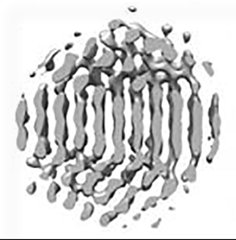Published online by Cambridge University Press: 10 September 2020

Liquid cell transmission electron microscopy (TEM) has become an essential tool for studying the structure and properties of both hard and soft condensed-matter samples, as well as liquids themselves. Liquid cell sample holders, often consisting of two thin window layers separating the liquid sample from the high vacuum of the microscope column, have been designed to control in situ conditions, including temperature, voltage/current, or flow through the window region. While high-resolution and time-resolved TEM imaging probes the structure, shape, and dynamics of liquid cell samples, information about the chemical composition and spatially resolved bonding is often difficult to obtain due to the liquid thickness, the window layers, the holder configuration, or beam-induced radiolysis. In this article, we review different approaches to quantitative liquid cell electron microscopy, including recent developments to perform energy-dispersive x-ray and electron energy-loss spectroscopy experiments on samples in a liquid environment or the liquid itself. We also cover graphene liquid cells and other ultrathin window layer holders.